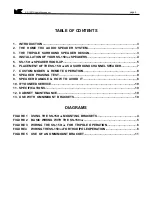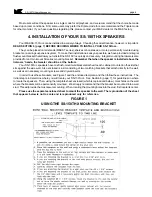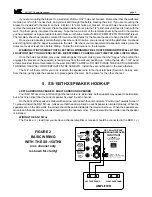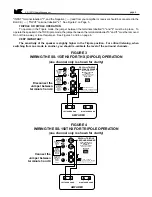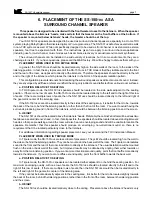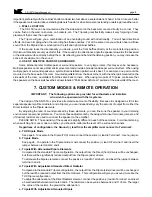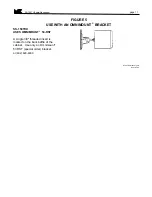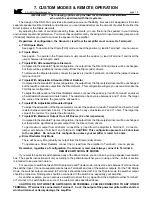
SS-150THX satellite speaker
page 12
7. CUSTOM MODES & REMOTE OPERATION
IMPORTANT: The following options are provided for enthusiasts and installers
who wish to experiment with their systems.
The design of the SS-150
THX
provides a tremendous amount of flexibility. Because it is designed as if it is two
separate speakers (a Direct radiator and a Dipole), you can independently vary the amount of output from either the
Direct radiator or the Dipole elements.
By adjusting the ratio of sound produced by these elements, you can fine-tune the speaker to your listening
environment or personal preference. You make these adjustments by choosing which input terminals, jumpers, and
(if desired) resistors are used to connect the speaker to the amplifier.
Regardless of configuration, the Ground (-) lead from the amplifier must connect to Terminal 2.
a. THX Dipole Mode
See page 6. To operate in the Dipole (THX) mode, connect the positive (+) lead to Terminal 1. Use no jumper.
b. Tripole Mode
See page 6. To operate in the Tripole mode, must connect the positive (+) lead to Terminal 1 and insert the
jumper between terminals 3 and 4.
c. Tripole With Attenuated Dipole Elements
Compared to the standard Tripole configuration, the output from the Direct (front) drivers will be unchanged,
but there will be significantly reduced output from the Dipole (side) drivers.
To attenuate the Dipole elements, connect the positive (+) lead to Terminal 3, and insert the jumper between
terminal 3 and 4.
d. Tripole With Adjustable Attenuated Direct Radiator
Compared to the standard Tripole configuration, the output from the Dipole (side) drivers will be unchanged,
but there will be reduced output from the Direct drivers. This configuration will give you a sound more like the
THX Dipole configuration.
To adjust the attenuation of the Direct Radiator element, connect the positive (+) lead to Terminal 1 and insert
a 5 watt resistor between terminals 3 and 4. The resistor can be any value between 2 and 11 ohms. The larger
the value of the resistor, the greater the attenuation.
e. Tripole With Adjustable Attenuated Dipole
To adjust the attenuation of the Dipole element, connect the positive (+) lead to Terminal 3 and insert a 5 watt
resistor between terminals 3 and 4. The resistor can be any value between 2 and 11 ohms. The larger the
value of the resistor, the greater the attenuation.
f. Tripole With Maximum Output From All Drivers (2.4 ohm impedance)
Compared to the standard Tripole configuration, the output from the Dipole (side) drivers will be unchanged,
but there will be significantly greater output from the Direct (front) drivers.
To get maximum output from all drivers, connect the (+) lead from the amplifier to Terminal 1. Connect a
jumper wire between Terminal 1 and Terminal 3. CAUTION: This configuration presents a 2.4 ohm load
to the amplifier. Do not use this configuration unless your amplifier is rated to 2 ohms.
g. Direct Radiator Only Mode
There will be very little (virtually no) output from the Dipole (side) drivers.
To operate as a Direct Radiator, connect the (+) lead from the amplifier to Terminal 3. Use no jumper.
Remember, regardless of configuration, the Ground (-) lead must always connect to Terminal 2.
REMOTE SWITCHING OF MODES
If you want to be able to switch between any of the above modes, you can do so by using a speaker level switch
box. The specific instructions will vary according to the particular switcher you are using and the , so this is section
is intended to be general in nature.
For example, to switch between THX Dipole mode and Tripole mode, connect one wire between Terminal 3 and
the switcher Input. Connect a separate wire between Terminal 4 and one of the switcher outputs. For the THX Dipole
mode, the switcher output connected to Terminal 4 should be turned off. For the Tripole mode, the switcher output
should be turned on. Nothing else should be connected to the switch box, especially your amplifier.
As another example, you can also use a switcher to direct the (+) signal from the amplifier to either Terminal 1
or Terminal 3, to switch between some of the custom modes described above.
CAUTION: DO NOT WIRE THE SWITCH BOX SO TERMINAL 2 CAN BE CONNECTED TO ANY OTHER
TERMINAL. If Terminal 2 is connected to Terminal 1, 3, or 4, the output of the power amplifier will be shorted,
which will almost certainly damage the amplifier.


